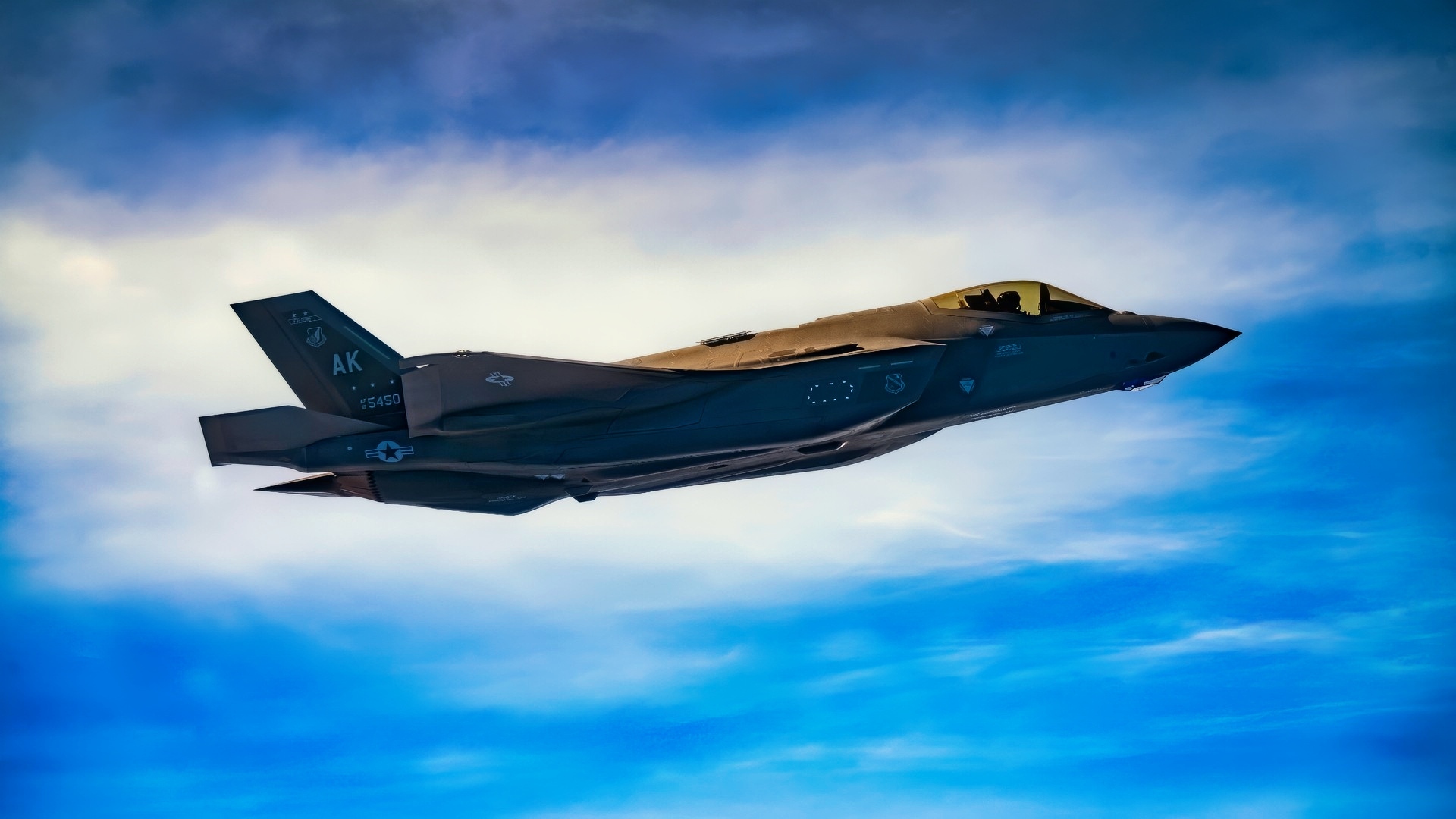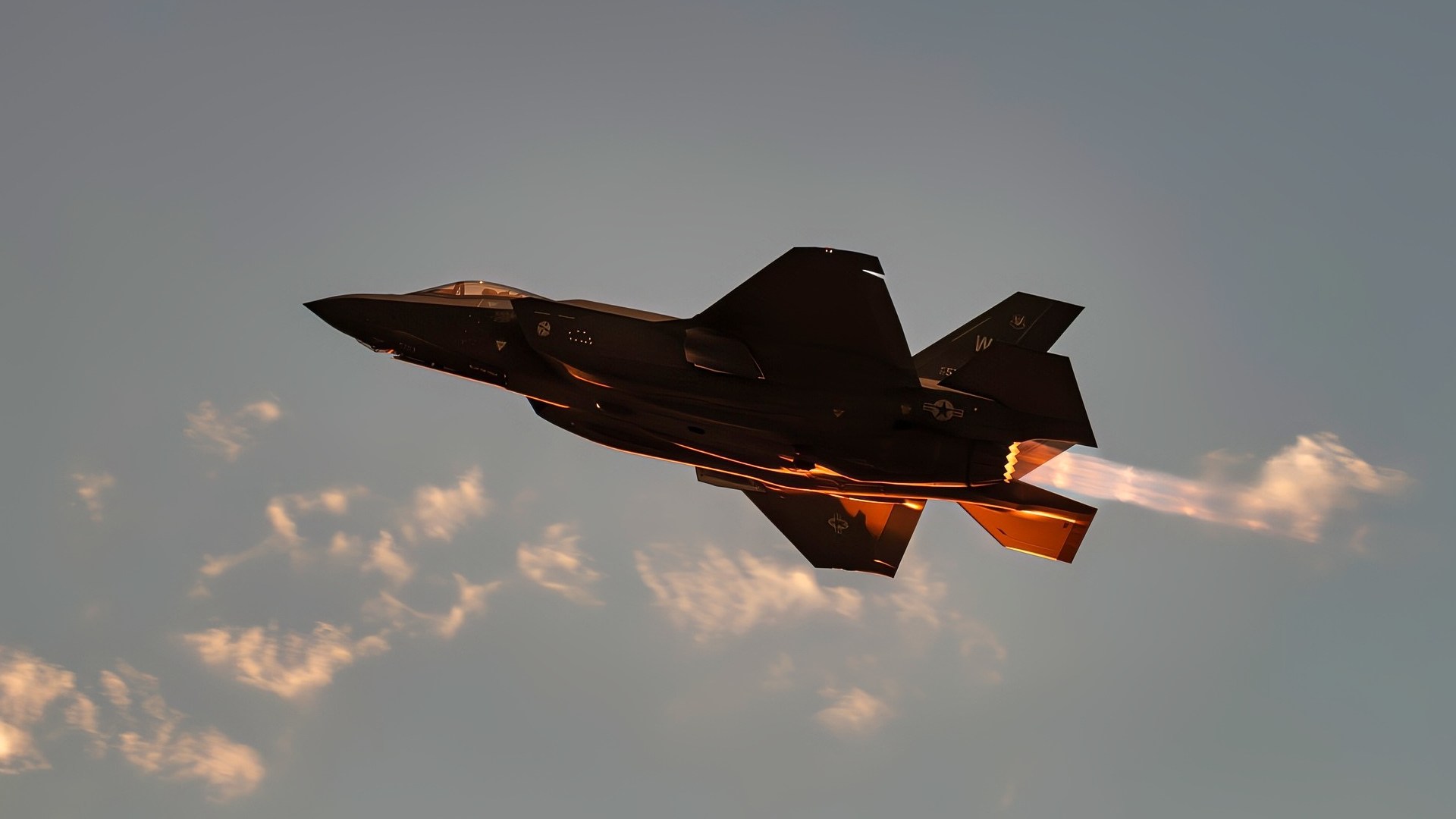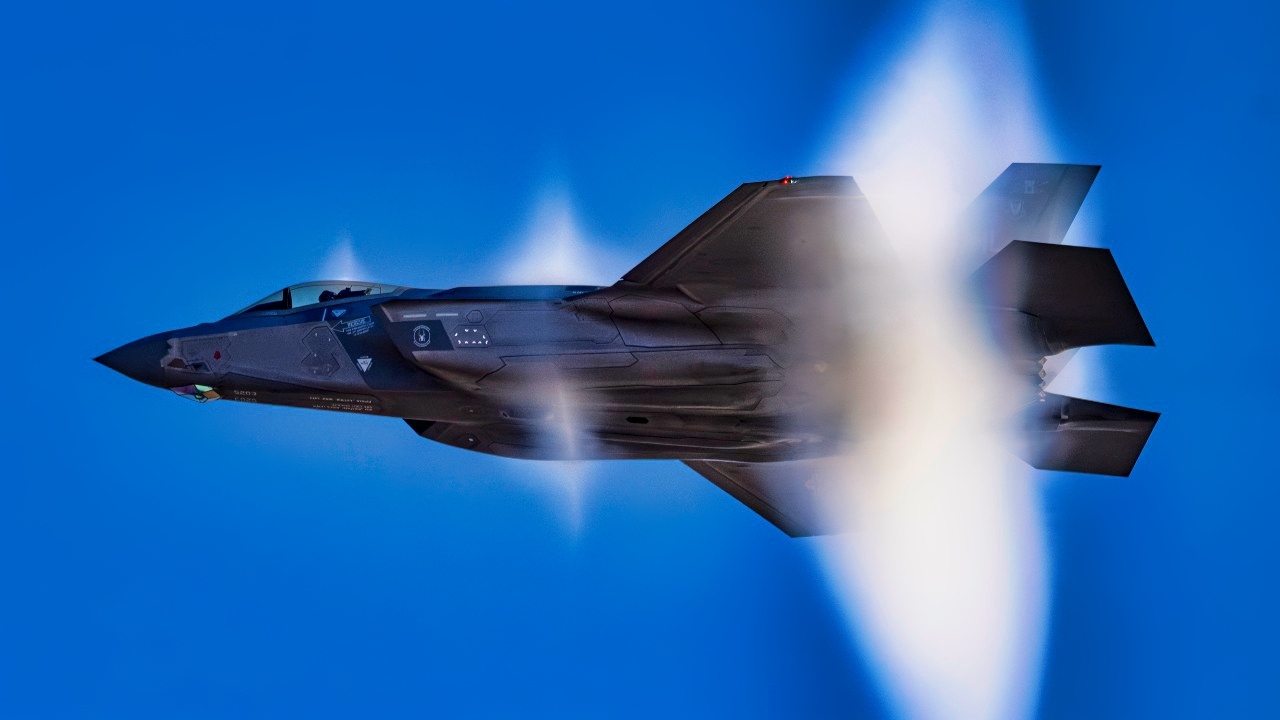Article Summary – The F-35 Lightning II is praised as the world’s most advanced stealth fighter and attacked as a $2 trillion budget sink.
-Lifetime costs have ballooned as sustainment, software, and service-life extensions drive expenses far beyond early projections.

U.S. Air Force Airman 1st Class Jacob Taylor, a dedicated crew chief assigned to the 48th Fighter Wing, communicates with an F-35 Lightning II pilot,during Point Blank 22-3, at Royal Air Force Lakenheath, England, June 23, 2022. Point Blank is a recurring joint training exercise designed to enhance tactical proficiency and interoperability with NATO allies and partners. (U.S. Air Force photo by Senior Airman Koby I. Saunders)
-Critics see a “do-everything” design weighed down by complexity and structural maintenance costs that allies will carry for decades.
-Yet the jet’s stealth, sensors, and data-fusion have made it the backbone of Western airpower, fielded or ordered by more than 20 nations.
-Whether the F-35 was “worth it” or not, it now sets the standard every rival is trying to match.
Was the F-35’s $2 Trillion Price Tag Worth It?
The F-35 Lightning II program is remarkable, but it is a target of both extreme praise and criticism. And for good reasons in both instances.
Estimates by the Government Accountability Office (GAO) project that the U.S. fleet of F-35s will ultimately cost more than $2 trillion over its lifetime.
For critics, it’s an apparent reason the program needs a rethink.
They say the price tag is a long-term burden, and that the F-35 represents a weapons program that, in the end, was a strategic overreach: it’s too costly, too complex, and too dependent on multiple roles.
On the other hand, supporters point to the obvious: the F-35 is the world’s most advanced stealth fighter jet, already the standard for U.S. allies everywhere, and a force multiplier in global power.
But that being said, there are fair criticisms of this program – and while it’s hard to say whether or not the F-35 was a mistake conclusively, these criticisms perhaps offer an idea of how a future program – like NGAD – could be run better.
Where the F-35 Program May Have Gone Wrong
The F-35’s projected life-cycle costs just keep climbing – and that’s the first gripe critics have with the program. In 2018, lifetime sustainment costs were estimated at roughly $1.1 trillion. By 2023, the estimate had jumped to around $1.58 trillion – an increase of 44%.

A U.S. Air Force F-35A Lightning assigned to the 356th Fighter Squadron, Eielson Air Force Base, Alaska, flies alongside of a U.S. Air Force KC-46A Pegasus assigned to the 77th Aerial Refueling Squadron, Seymour Johnson AFB, North Carolina, over the Pacific Ocean while enroute to the Singapore Airshow 2022, Feb. 11, 2022. The Singapore Airshow is the largest defense exhibition and biennial international tradeshow in the Pacific attracting thousands of participants from 50 countries. The U.S. Military is participating in Singapore Airshow 2022 by providing aerial demonstrations and static aircraft to demonstrate commitment and build upon partnerships with Singapore. (U.S. Air Force photo by Master Sgt. Richard P. Ebensberger)
According to the GAO, the cost increase is a result, in large part, of the extension of the aircraft’s service life through 2088, as well as inflation-driven maintenance burdens.
And the sheet scale of the investment in the program, between acquisition costs and sustainment, raises the question of whether the U.S. has leaned too heavily on one platform at too high a price…for too long.
What’s more, while some savings efforts have occurred, the Department of Defense believes that those savings – according to the GAO – will not fundamentally change the underlying cost structure. And costs could keep rising.
Sustainment is a huge driving factor. While procurement dominated headlines for years, representing huge investments in new aircraft for the U.S. fleet, it’s really the sustainment and operating costs that are biting the hardest.
According to the Congressional Budget Office, for example, the operating and support costs of the F-35A variant in 2023 approached $3.2 billion for the entire fleet.
For the entire fleet, it was $5 billion.
Meanwhile, planned flight hours have been reduced, availability has declined, and yet, the per-aircraft annual sustainment costs target remains far higher than its original goal – reaching $6.6 million, compared to the intended $4.1 million.

A U.S. Air Force F-35A Lightning II takes off for a mission during U.S. Air Force Weapons School Integration (WSINT) at Nellis Air Force Base, Nevada, June 4, 2025. WSINT is a graduate-level training event that combines multi-domain assets in large-force scenarios, enabling U.S. Air Force and joint service members to hone tactical expertise and integrate advanced capabilities in a dynamic threat environment. (U.S. Air Force photo by William R. Lewis)
It’s no surprise that sustainment costs this much. A sophisticated stealth fighter demands specialist maintenance support at depots, proprietary sustainment software and tools, and highly complex logistics networks.
These kinds of features lock in recurring cost burdens that are simply unavoidable – but they’re already being questioned by many allies, too. And because these costs are structural, they’ll persist for decades. For as long as the F-35 is in service, sustainment costs will persist – and may arguably increase.
Consider also the fact that the F-35 was designed to serve multiple roles across the U.S. Air Force, Navy, and Marine Corps.
It’s an Air Force strike fighter, a carrier-capable Navy interceptor, and a Marine short take-off/vertical landing jump-jet.
That “do it all” design has resulted in several compromises – meaning the negatives of the F-35 program extend beyond costs. From extra weight and performance trade-offs to enormous software complexity, the F-35 is by no means an easy-to-maintain aircraft platform.
It’s a problem that has prompted some analysts, over the years, to argue that developing a simpler legacy replacement for high-volume missions and a separate, more premium stealth jet for high-threat missions might have cost less and delivered much faster.

An F-35 Lightning II connects to a KC-10 Extender fuel injection arm to refuel during an aerial training mission, during Operation Astral Knight 19 over the Adriatic Sea, June 3, 2019. Astral Knight is a joint, multinational exercise taking place throughout various locations in Europe, with more than 900 Airmen participating in the exercise. (U.S. Air Force photo by Staff Sgt. Joshua R. M. Dewberry)
But there’s a lot that makes the F-35 great, too.
The World’s Most Successful Stealth Fighter
Despite the cost and complexity, the F-35 has earned a global reputation.
More than 20 countries have purchased or committed to buying the jet, with over 1,200 units already delivered globally and production expected to exceed 3,000.
Its combination of stealth, advanced sensors, and data-fusion capability remains unique among exportable platforms, too. That means the U.S. and its allies can all field fifth-generation capability together on a shared platform.
The aircraft is the backbone of allied airpower for many Western militaries, and the presence of F-35 jets across NATO greatly improves interoperability: it means shared logistics, shared training, and even shared tactics. All the while, the rest of the world is playing catch-up.
While the F-35’s scale and export success make it the world’s dominant platform, many alternative projects look like attempts to capture customers who can’t afford an F-35.
For example, the JAS 39 Gripen E/F is explicitly pitched as a cheaper alternative in markets where the F-35 is financially out of reach. Others, like the Sukhoi Su-57, remain in low-rate production and barely exported at all.
The F-35 sets the standards, and the rest of the world follows. In other words, the U.S. made the world’s best stealth fighter jet – and despite the costs, it serves its purpose very well indeed.
About the Author:
Jack Buckby is a British author, counter-extremism researcher, and journalist based in New York who writes frequently for National Security Journal. Reporting on the U.K., Europe, and the U.S., he works to analyze and understand left-wing and right-wing radicalization, and reports on Western governments’ approaches to the pressing issues of today. His books and research papers explore these themes and propose pragmatic solutions to our increasingly polarized society. His latest book is The Truth Teller: RFK Jr. and the Case for a Post-Partisan Presidency.
More Military
Taiwan’s F-16V Fighter Was Built to Fight China’s Air Force
5 Places World War III Could Break Out in 2026
The X-37B Space Plane Is Breaking All the Rules and Makes Chinese Generals Sweat










